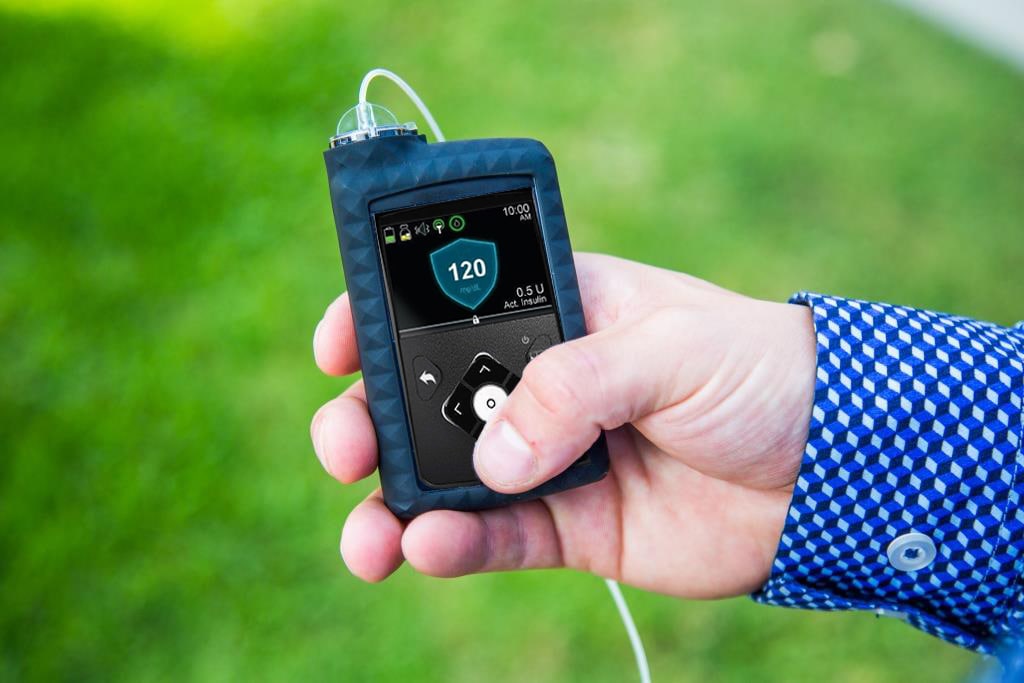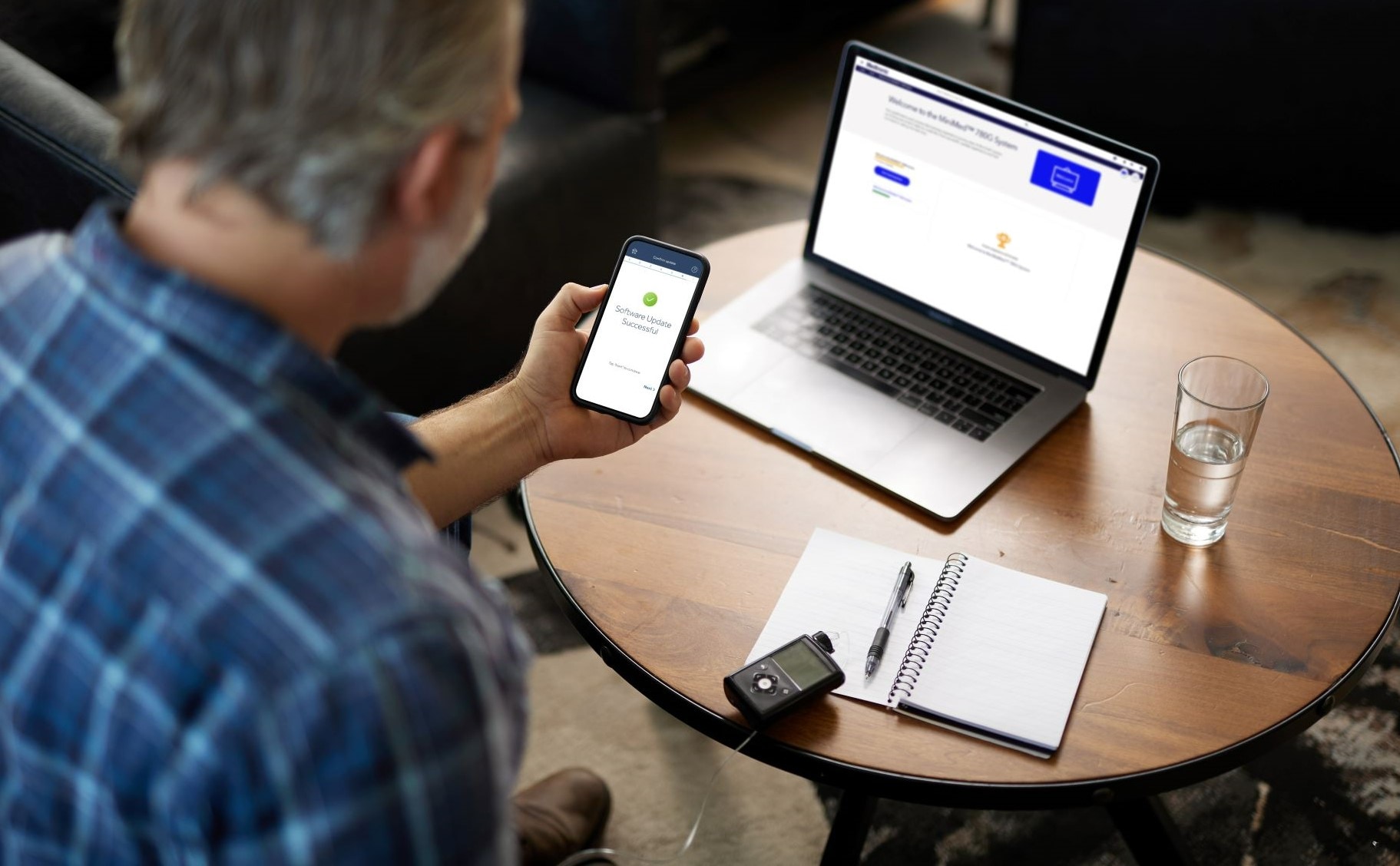How to care for your MiniMed™ insulin pump

In time, your MiniMedTM insulin pump will become your side-kick. It will go everywhere with you and will be by your side through many highs and lows (figuratively and literally)! Since it will go along with you for so many life adventures, why not take a few extra minutes to keep your side-kick in tip-top shape?
1. Clean Your Pump with a Mild Detergent
When it’s time to clean your pump, wash your hands and use a cloth mixed with mild detergent, such as dish soap, and water, to wipe your pump clean. You can use a clean, dry cloth and an alcohol wipe to disinfect your pump. There isn’t a set frequency of how often cleaning a pump is recommended, but it’s a good practice. It might be a good thing to add to your spring cleaning to-do list.
Do not place your pump under running water or submerge it into any liquid. (Even though the MiniMedTM 630G and MiniMedTM 670G systems are rated waterproof at the time of manufacture, it’s best to avoid submerging it during cleaning). And avoid cleaning it with household agents such as all-purpose cleaner, glass cleaner, hand sanitizer, or nail polish remover.
2. Make Sure Your Hands Are Clean
Avoid exposure to sunscreens, lotions, insect repellents, household and organic cleaning agents. So if you’re spending the day cleaning or just put lotion on, be sure to wash and dry your hands before handling your pump after using these types of products.
3. Open and Close Your Battery Cap with a Coin or Belt Clip
Did you know? On the MiniMedTM 630G and MiniMedTM 670G systems, you can use the bottom of your belt clip to open your battery cap. Just detach the belt clip and use it to open and/or close your battery cap. It’s a dual-purpose tool!
For MiniMedTM Paradigm® platform pumps, use a thick coin, such as nickel or quarter, to open and/or close your battery cap. Tighten until the slot is horizontal to prevent it from overtightening. If it makes it easier for you, keep a coin in places where you might change your battery most frequently, like in a kitchen drawer or your diabetes supply cabinet.
4. Place Your Pump in a Case

In addition to offering new ways to show your style, cases can help provide a cushion against bumps during your daily activities, and come in a variety of different materials and colors. You could even make these accessories part of your signature style! Here are a few of our favorites:
- Silicone skins: low-profile skins that wrap around a belt clip, cosmetically enhance, and help resist scratching.
- Sports cases or SPI-belts: heavy-duty protection made from water and soil-resistant materials (great for any of you adventure-seekers)
- Pouches: act as a comfortable layer between your pump and skin to clip on to your waistband or pocket
5. Add a Screen Protector

Just like that screen protector that you might have on your cell phone, we also have them available for your pump! A screen protector is a simple way to add a buffer from day-to-day wear and tear that could impact your screen. For example, if you keep your pump in your pocket with your keys or wear it on your hip during outdoor adventures, this can add an extra layer of protection to keep it smooth and protected. Screen protectors can be purchased on our online store.
6. Wear Your Buttons Away From Your Body
If you wear your pump in a place where it touches your skin, make sure your pump buttons face away from your body to reduce moisture exposure. This is especially important for direct skin contact (like wearing a pump in a bra.) Here are a few ways you can wear your pump:
- Clip it to your waistband or belt
- Place the pump (with or without the clip) into the pocket of your pants
- Keep it in your shirt pocket
- Use the leg or thigh pouch to wear it around your thigh, calf, or ankle
7. Exercise with Your Pump in a Case or on Your Belt
Working up a sweat feels good and helps cool down your body, but it can expose your pump to moisture without you even realizing it. Keep your pump dry while exercising and on hot days by wearing it in a case made from water-resistant materials, such as the SPIbelt, our sports or nylon case, and/or on your belt clip. If you decide to disconnect your pump while working out, make sure it’s put in a safe place.
8. Protect Your Pump Around Water and In the Heat
This tip varies depending on what type of insulin pump you have. 
The MiniMedTM 630G and MiniMedTM 670G systems are waterproof. At the time of manufacture and when the reservoir and tubing are properly inserted, the pump is waterproof in up to 12 feet of water for 24 hours at a time. The GuardianTM Link transmitter and GuardianTM Link 3 transmitter is waterproof in up to 8 feet of water for up to 30 minutes. We recommend that you still take care of it and don’t go swimming with it, but the pump will maintain waterproofing if this can’t be avoided. 
The Paradigm® platform, MiniMedTM Revel, and MiniMedTM 530G systems are rated water-resistant but not water-proof, so be sure to disconnect from your pump when participating in water activities, showering, or using the sauna or steam room. If you’re going to be at the beach, pool, or waterpark all day, consider staying connected to your pump until entering the water or “splash zone,” and take breaks from the water when you need to reconnect. Talk with your family and friends to eliminate the chance of being pushed into the water while wearing the pump. If you notice moisture on your pump, dry it off with a clean dry cloth. You can verify your pump is working properly by selecting Self-test from the pump’s Utilities Menu. If your hands are wet, be sure to dry them off before handling your pump. While you’re disconnected, test your blood glucose (BG) often, and be prepared with fast-acting insulin and glucose. Be sure to talk with your healthcare team to establish a plan if you’re going to regularly disconnect for longer than one hour.
With any insulin pump, keep in mind that Medtronic insulin pumps are designed to withstand temperatures up to 108 Fahrenheit. The temperature threshold of your insulin will vary by brand, type, and concentrations, so best to talk with your insulin manufacturer for that information.
9. Minimize Scanning Technology Exposure
Be careful when wearing your pump in new environments. If you’re going to the doctor’s office for an X-rays, CT scans, PET scans, and MRIs, be sure to disconnect from your pump prior to the body scan.
While going through airport security, be sure to remove both your pump and sensor if you’re going through the body scanner, but do not send the devices through the x-ray machine. As an alternative, you can go through an airport metal detector, or ask for a pat-down screening process.
10. Store in a Dry Cool Place
If you disconnect from your pump, keep your pump, BG meter, and other diabetes supplies in a safe place, unexposed to direct heat and away from water. If your supplies must be outdoors, hide them in a bag, or under a few light colored towels, in a dry shady area. Since different items have different storage requirements, keeping them dry and close to room temperature will ensure that the pump and insulin will perform as expected when you reconnect.



